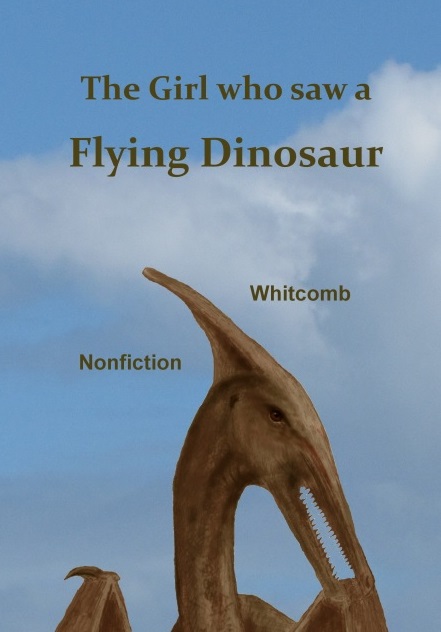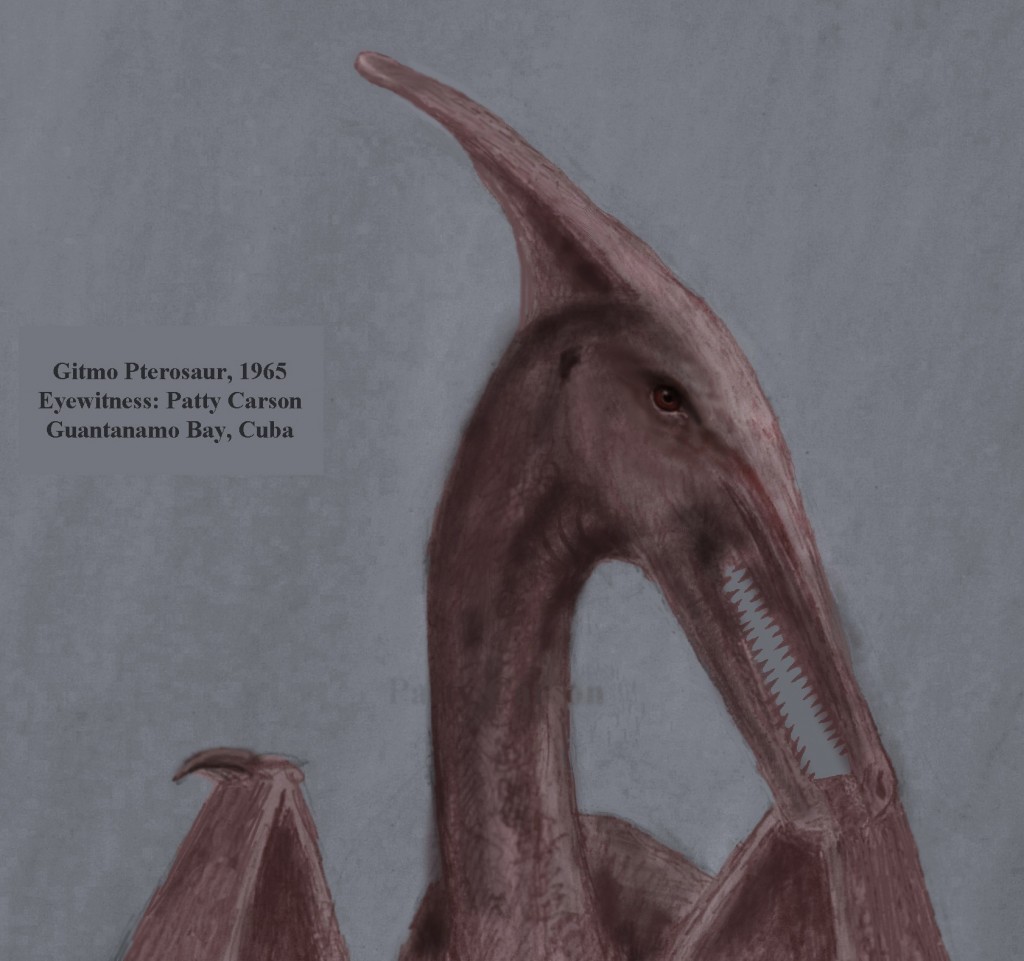By the nonfiction cryptozoology author Jonathan Whitcomb
Why would the new book The Girl who saw a Flying Dinosaur be the best Christmas or birthday gift for many kids and teenagers? It invites them into a new world of adventure in cryptozoology: true stories of encounters with modern living pterosaurs.
I know that those flying creatures are not actually dinosaurs. But when little Patty Carson saw one of them poke its head above the tall grass on a U.S. military base, in 1965, the first thing she probably said to her family was something like this: “I saw a flying dinosaur.”
Even when she soon changed her approach by using a word that was more precise—’pterodactyl’—they still would not believe a six-year-old. . . . at least not until other members of the family started to see similar animals at Guantanamo Bay, Cuba.
I know that sounds like a fiction, something for kids much older than those who delight in Danny and the Dinosaur. (Six million copies of that children’s book have been purchased since 1958, yet it’s not the right gift for most youth from eight to fourteen years old.) The Girl who saw a Flying Dinosaur is not only what the older ones will enjoy but what they need: a NON-fiction that can inspire youth to look deeper than many adults have looked. It allows them to freely come to their own conclusions, yet the book invites them to consider how eyewitnesses feel when people don’t believe them and how they feel when someone does believe them.
The Girl who saw a Flying Dinosaur is not confined to the story of one little girl in the 1960’s but compares little Patty’s encounter with those of many other eyewitnesses: in Papua New Guinea and in the United States. Those ordinary persons who have seen extraordinary flying creatures—those eyewitnesses have been not only children but teenagers and adults. Yet important details have come up in their testimonies: long tails on large featherless flying creatures, for example.
.
Sketch drawn by Patty Carson when she was an adult
More than that, it explains why we need to believe what other persons tell us about what they have seen, at least sometimes. We need to consider that some people might be telling the truth even when it sounds strange:
“With a person who reports observing something, I give this reason for believing what was said: When we believe that person, he or she might tell us more. That can help the other person be happy and it can help us be happy. There’s more: We can learn from each other.
“For that to always work, however, everyone needs to tell the truth all the time. That does not always happen. Not everyone is always nice, so we live in a world that is imperfect. Yet each of us can make the world a little better in small steps.” [from Chapter 7: Why Believe People?]
The Girl who saw a Flying Dinosaur, however, does not preach but simply invites children and teenagers to consider what only a few scientists had previously thought about: that a wonderful new discovery in biology may soon be made and that science truly can advance in an exciting new way.
###
.
The Girl who saw a Flying Dinosaur
This book is for readers between the ages of about eight and fourteen. [official home page for this nonfiction]
.
Some dinosaur bones have been dated to have lived more recently
Since carbon dating became available, in the mid-20th century, many scientists had assumed that the new method for determining ages was inappropriate for dinosaur fossils. They took it for granted that no carbon-14 could be left from those bones, for radiocarbon dating should detect no radioactive carbon from anything that had lived many millions of years ago. [That now seems to not be the case.]





3 Replies to ““Dinosaur” Book for Children and Teens”
Comments are closed.